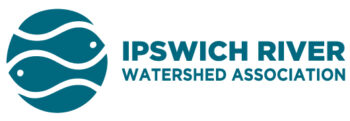These days, it seems like technology is advancing at an alarming rate, and we are left wondering if our reliance on technology is becoming problematic. At this year’s Great Marsh Symposium there were comments made about getting students into nature and off their smartphones. But if you’ve ever tried to pry a tablet from a three year old’s sticky little hands, you know that can be a struggle. Well as they say, if you can’t beat them, join them!
There’s an easy to use app called iNaturalist which can be used to track geo-referenced observations of plants and animals. You may wonder, why is this helpful? For the Ipswich River Watershed and surrounding areas, iNaturalist can be used in a number of very useful, and FUN, ways! The best part is that you don’t have to be an expert to get started, just be willing to download an app on your phone, tablet or computer, head out into nature and snap a few pictures. Follow these directions to get started with iNaturalist and then based on your interests and geographic location you can join a Project that seems interesting to you. The best part is that after you take a photo, you can choose to identify the specimen yourself, leave the identification section blank or iNaturalist will suggest an identification for you.
Do you live near a freshwater pond or waterway?
Download the Massachusetts Non-native aquatic plant key and join the Ipswich River Weed Watchers Project to track non-native species or the iNaturalist Algal Blooms Project to identify discolored water that may require further investigation.
Do you live near the coast and love beach combing?
Check out the Marine Invasive Species Program Storymap, download the marine invader flashcards and join the iNaturalist MIMIC (Marine Invader Monitoring and Information Collaborative) Project.
Do you see a lot of roadkill on your commute?
Aid us in identifying hazardous stretches of roadway by joining the GLOBAL Roadkill Observations Project. The data from this effort could support future road-stream crossing upgrades and thankfully the new standards help improve safety by accounting for terrestrial animal passage UNDER the roadway, which can cut down on accidents and roadkill.
Are you a SUPER Citizen Scientist? Try all four projects and start helping with identifications in your area, take part in a bioblitz or start your own project! Technology is pretty amazing isn’t it?
[blog_subscription_form title=”Subscribe For More River Updates”]
